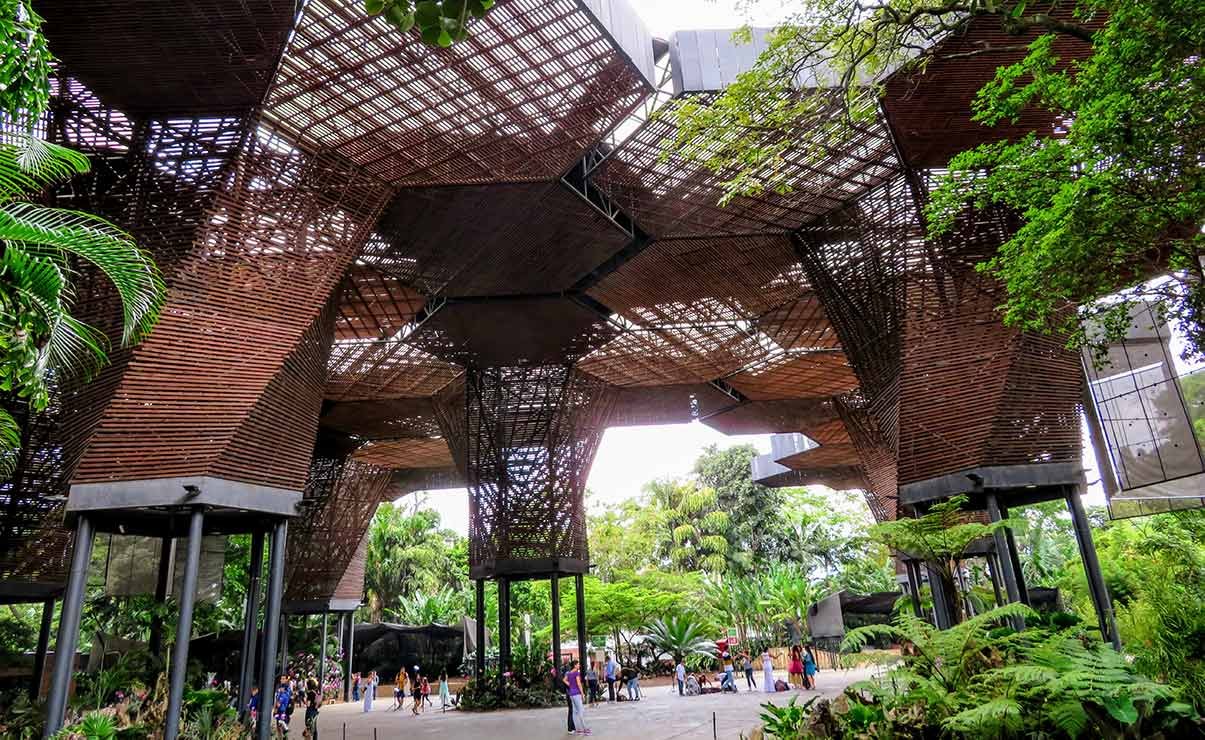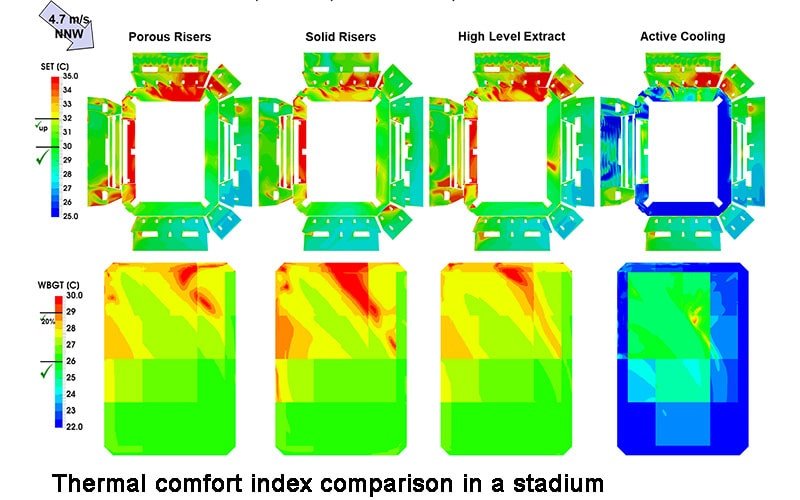Outdoor Thermal Comfort
Our Approach
Our team of specialists has developed a collaborative approach in order to identify and mitigate adverse microclimate effects (wind and thermal). It consists of two numerical assessments: the Pedestrian wind comfort and safety (or wind environment) and the Outdoor thermal comfort.
When investigating the overall thermal comfort of pedestrians at outdoor occupied areas, Wind speed is not the only contributor to the quality of spaces. A combination of other factors such as environmental parameters (temperature, humidity, solar radiation, daylight) and thermo-physiological parameters (occupants’ activity, metabolic rate and clothing) tend to influence the sensation of thermal comfort.
Therefore, Outdoor thermal comfort studies usually complement pedestrian comfort studies. Based on CFD simulations software, they will specifically advise on the contribution of heat to the overall outdoor pedestrian comfort.
Finally, the combination of the results of both the above studies will help architects and designers to devise thermal mitigation strategies (e.g. in a shaded area, people tend to be more sensitive to wind; while in plain sunshine, a breeze is actually felt to be positive).
Advantages
By investigating microclimate conditions early in the design process of a building or a masterplan development, the use of numerical simulation allows to identify key areas where mitigations are required. It results with an improved design for a marginal cost compared to retrofitting after construction.
For the vast majority of building projects, the computational fluid dynamics (CFD) will help designers to have an acute understanding of the wind conditions at an unlimited number of locations in the vicinity of the building. Compare to physical wind tunnel testing, CFD enables a detailed, quicker, and affordable evaluation & validation of different potential mitigation schemes.
Last, by modifying the outdoor comfort and outdoor activities schedules, the CFD based microclimate studies will help create a better perception of the recreational and commercial outdoor areas and thus increase the overall value of a development.





